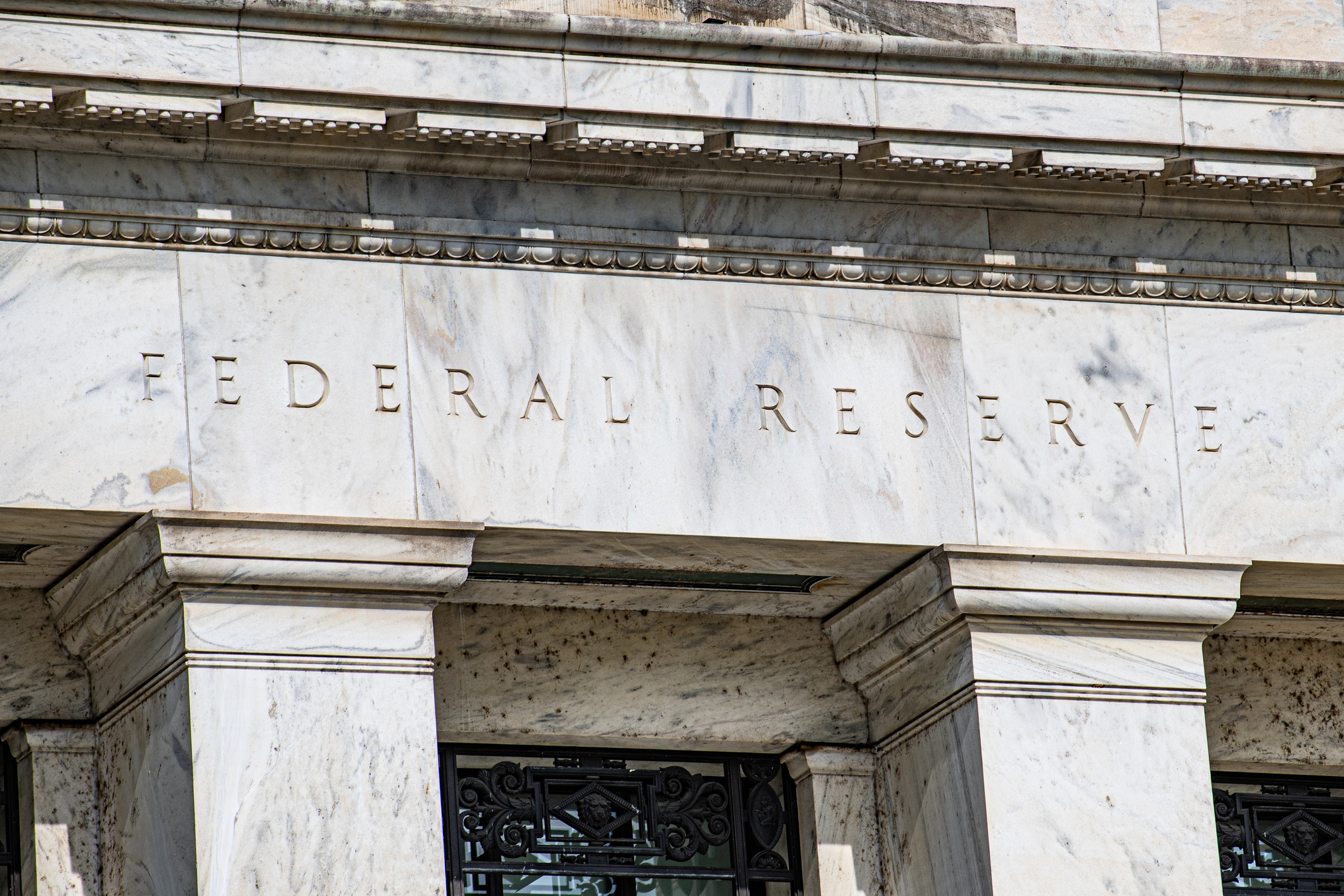Why You Should Get Whole Life Insurance After the Fed Meeting
Now is a good time to diversify your retirement portfolio with a whole life insurance policy.

After Jerome Powell announced the third rate cute of the year at the Federal Reserve's December meeting, dropping federal interest rates to 3.50%-3.75%, many Americans are figuring out how to best take advantage of lower interest debt while maximizing their dwindling yield on high-yield savings accounts and CDs.
One financial move you might not realize you should make before rates drop any further is buying whole life insurance.
An insurance policy and savings account wrapped up in one, whole life insurance can play a key role in protecting your financial future. And now is one of the best times to get a policy as insurance companies tend to offer lower premiums or better cash value growth on whole life insurance policies when interest rates are higher.
From just $107.88 $24.99 for Kiplinger Personal Finance
Become a smarter, better informed investor. Subscribe from just $107.88 $24.99, plus get up to 4 Special Issues

Sign up for Kiplinger’s Free Newsletters
Profit and prosper with the best of expert advice on investing, taxes, retirement, personal finance and more - straight to your e-mail.
Profit and prosper with the best of expert advice - straight to your e-mail.
That means shopping for a whole life insurance policy now could be your chance to lock in a low premium for the life of the policy or lock in an above-average fixed interest rate to provide guaranteed growth of your cash value.
How federal interest rates affect whole life insurance

For participating whole life insurance policies — where the life insurance company pays you a share of its profits in the form of dividends — the current higher federal interest rates can translate to higher dividends as the company's underlying investments, like higher bond yields.
For non-participating whole life insurance policies — where the company doesn't pay dividends, but offers you a guaranteed interest rate — the impact depends on how your policy works.
If you have a variable (or non-guaranteed) interest rate, for example, your earnings tend to go up when the company's investments go up because the insurer can afford to pay higher rates. And if you get a whole life insurance policy with a fixed rate now, you may be able to lock in today's above-average rates for the life of the policy.
Another indirect benefit of the current market is the chance to lock in a lower premium. When costs rise, consumers are less likely to buy life insurance, and existing policyholders may even surrender their policies because they no longer want to pay the premium. As a result, insurance companies are more likely to offer lower premiums and other incentives to win you over.
If you opt for a policy with a fixed premium, you can lock in that cheaper premium for life. Just make sure to shop around and factor in the benefits and growth potential as well as the premium when comparing different whole life insurance policies.
The benefits of whole life insurance as a low risk investment

While whole life insurance policies are typically the most expensive type of life insurance, that higher premium can be worth the price for investors who want a lower-risk place to put their money during market volatility.
That's because the cash value of your policy is guaranteed. Instead of fluctuating, like your stock portfolio does, cash value in whole life insurance works more like a savings account. Any interest you've earned so far is yours once it's credited to your account.
Those earnings are also tax-deferred. Like a traditional IRA, you don't pay taxes on your earnings until you start making withdrawals. Even then, you only pay taxes once you've withdrawn more than you initially paid in via your premiums.
These tax benefits also make it a useful addition to your larger retirement portfolio. If you've already maxed out your 401(k) and hit your IRA contribution limit for the year, whole life insurance gives you another tax-deferred place to save up for retirement.
Meanwhile, in an emergency, borrowing against your life insurance is typically much more cost-effective than other retirement accounts. While taking out a loan against the cash value of your policy does carry an interest rate, it's often cheaper than the penalties that come with making early withdrawals from your IRA or 401(k).
Plus, as a loan rather than a withdrawal, the actual cash value of your policy is untouched, so you can continue earning interest on your full cash value while you pay back your loan.
Whole life insurance isn't a substitute for other investments

Whole life insurance has plenty of benefits that make it a valuable asset for risk-averse investors or retirement portfolios. However, it is still one of the most expensive types of life insurance you can buy. And the returns are typically lower than the returns you'd get from other investments.
So, you still want a healthy mix of assets in your portfolio to make sure you're getting the maximum growth potential for your level of risk tolerance.
But when used as a low-risk hedge against market volatility or another way to build tax-deferred wealth for retirement, whole life insurance can be a valuable asset, and right now happens to be one of the better times to get a new policy.
If you're not sure whether or not a whole life insurance policy is the right fit for your portfolio, talk to a financial adviser about your financial goals and concerns to figure out the best strategy for you.
Related content
Profit and prosper with the best of Kiplinger's advice on investing, taxes, retirement, personal finance and much more. Delivered daily. Enter your email in the box and click Sign Me Up.

Rachael Green is a personal finance eCommerce writer specializing in insurance, travel, and credit cards. Before joining Kiplinger in 2025, she wrote blogs and whitepapers for financial advisors and reported on everything from the latest business news and investing trends to the best shopping deals. Her bylines have appeared in Benzinga, CBS News, Travel + Leisure, Bustle, and numerous other publications. A former digital nomad, Rachael lived in Lund, Vienna, and New York before settling down in Atlanta. She’s eager to share her tips for finding the best travel deals and navigating the logistics of managing money while living abroad. When she’s not researching the latest insurance trends or sharing the best credit card reward hacks, Rachael can be found traveling or working in her garden.
-
 Gold and Silver Shine as Stocks Chop: Stock Market Today
Gold and Silver Shine as Stocks Chop: Stock Market TodayStocks struggled in Friday's low-volume session, but the losses weren't enough to put the Santa Claus Rally at risk.
-
 Don't Wait Until January: Your Year-End Health Checklist to Kickstart 2026
Don't Wait Until January: Your Year-End Health Checklist to Kickstart 2026Skip the fleeting resolutions and start the new year with a proactive plan to optimize your longevity, cognitive health, and social vitality.
-
 Premium Rewards Cards: More Perks, Higher Fees
Premium Rewards Cards: More Perks, Higher FeesSome issuers are hiking the annual fee on their flagship luxury credit cards by hundreds of dollars. Are they still worth using?
-
 Premium Rewards Cards: More Perks, Higher Fees
Premium Rewards Cards: More Perks, Higher FeesSome issuers are hiking the annual fee on their flagship luxury credit cards by hundreds of dollars. Are they still worth using?
-
 3 Trips to Escape the Winter Doldrums, Including An Epic Cruise
3 Trips to Escape the Winter Doldrums, Including An Epic CruiseThree winter vacation ideas to suit different types of travelers.
-
 4 Financially Savvy Things to Do with Unwanted Gifts
4 Financially Savvy Things to Do with Unwanted GiftsDon't send that unwanted gift to the landfill. Find a way to squeeze out some of its cash value instead.
-
 I'm an Insurance Expert: Sure, There's Always Tomorrow to Report Your Claim, But Procrastination Could Cost You
I'm an Insurance Expert: Sure, There's Always Tomorrow to Report Your Claim, But Procrastination Could Cost YouThe longer you wait to file an insurance claim, the bigger the problem could get — and the more leverage you're giving your insurer to deny it.
-
 How to Leave Different Amounts to Adult Children Without Causing a Rift
How to Leave Different Amounts to Adult Children Without Causing a RiftHere’s how to leave different amounts to adult children without causing a family rift.
-
 Introducing Your CD's Edgier Cousin: The Market-Linked CD
Introducing Your CD's Edgier Cousin: The Market-Linked CDTraditional CDs are a safe option for savers, but they don't always beat inflation. Should you try their counterparts, market-linked CDs, for better returns?
-
 How to Protect Yourself and Others From a Troubled Adult Child: A Lesson from Real Life
How to Protect Yourself and Others From a Troubled Adult Child: A Lesson from Real LifeThis case of a violent adult son whose parents are in denial is an example of the extreme risks some parents face if they neglect essential safety precautions.
-
 Here's How Much You Can Earn with a $100,000 Jumbo CD
Here's How Much You Can Earn with a $100,000 Jumbo CDYou might be surprised at how fast a jumbo CD helps you reach your goals.